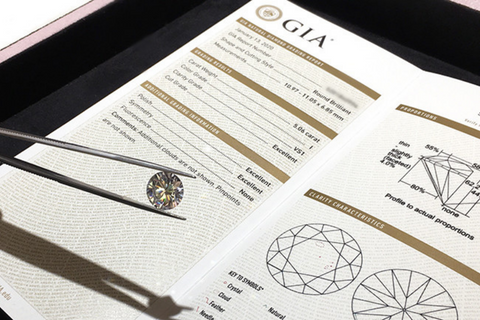Lab-Created Diamonds

Regardless of the style of jewellery you are wearing, be it ring, bracelet, earrings, or necklace, there is something about a diamond that just sets the piece apart. These scintillating gems can take any outfit from day to night, or night out to black tie formal in seconds. Whether your stones are a symbol of your love and commitment to another, or simply a precious gift to yourself, diamonds are revered and luxurious adornments. If you are in the market for a new diamond, you may have heard about lab-created diamonds.
Laboratory grown diamonds go by many different names, lab-created, lab-made, cultured diamonds or engineered diamonds, to name a few. Regardless of how you refer to these, Lab-created diamonds have caused quite a stir in the diamond industry. These gemstones have the same chemical, optical and physical properties as natural diamonds as well as the same crystal structure. It is little wonder that lab-created diamonds, like those used in our Vida range, are becoming a popular alternative to natural diamonds.
So are lab-created diamonds, really diamonds?

Yes. Simply put, lab-grown diamonds are real diamonds.
As the name suggests, unlike natural diamonds, lab created stones are grown in a lab or a factory, in a very short time (2-3 weeks) using one of two main processes.
High Pressure, High Temperature (HPHT)
Stones grown using this method are created by mimicking the environmental conditions that create natural diamonds in the earth. A diamond “seed” is placed in a piece of carbon, and similar pressures as those in the earth’s mantle, 5-6 GPa, along with temperatures ranging from 1300°C - 1600°C are applied to stimulate crystal growth around the seed.
Chemical Vapor Deposition (CVD)
Like HPHT, CVD uses a small diamond seed as a catalyst for the crystallisation process. This seed is placed inside a sealed chamber that is heated to between 700°C - 1300°C before being flooded with carbon rich gases (typically methane and hydrogen). These gases are then ionised into plasma using a technology similar to lasers or microwaves. This technology essentially breaks down the molecular bond of the gas. Once the molecular bond is broken down, pure carbon begins to stick to the seed and a new diamond forms. Additional treatments may be used (heat or irradiation) to enhance or change the diamond’s colour after it is grown.
Can you tell the difference between natural and lab-created diamonds?
With the naked eye it is impossible, even for a highly trained eye, to see the difference between a natural and a lab-created diamond. Lab-created diamonds are diamonds. Distinguishing between a lab-created and a natural diamond requires specialist scientific testing by a trained gemologist. Traditional observations and diamond detectors cannot tell a natural diamond apart from a lab-created diamond as they are chemically and optically identical.
Just like natural diamonds, lab-created diamonds also come with a grading report. These can be issued by certified grading authorities such as the International Gemological Institute (IGI), or the Gemological Institute of America (GIA) among others.

A grading report includes a grade for each of the four C’s and a verification report that your diamond was grown in a lab. Any diamond is a big financial commitment and a grading report ensures that you are receiving the quality that you expect.
Benefits of Lab-Created Diamonds
Diamonds grown in a lab are equally as beautiful as diamonds found in the earth and there are many benefits to lab-created stones that add to their value.
Socially responsible
Knowing where your diamond originated from is the single most important benefit of a lab-created diamond. You can know for certain exactly where your stone came from. A moral and ethical issue that has long plagued the diamond industry is that many diamonds come from conflict regions, and there have been many scandals linked to child labour, poor working conditions for miners, human rights violations and the role of diamond mining in funding armed conflicts. Although many standards and safeguards have been implemented to ensure that natural diamonds are sourced responsibly, lab-created diamonds offer this certainty.
Smaller Environmental Impact
Lab-created diamonds do not require mining and do not contribute to the environmental impact mining has on the planet.
Less Expensive
Currently lab grown diamonds cost around 30% less than a natural diamond of the same quality and carat.
If you're in the market for an impressive piece, Lab-Grown Diamonds are a great option to consider!








Leave a comment